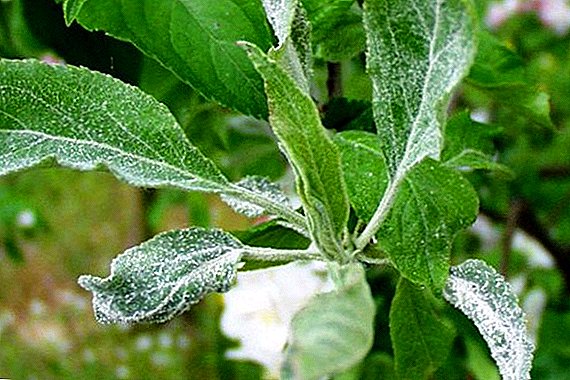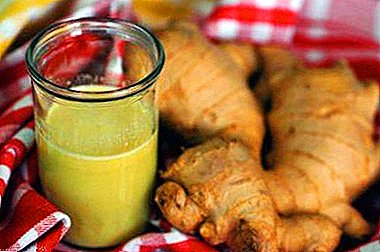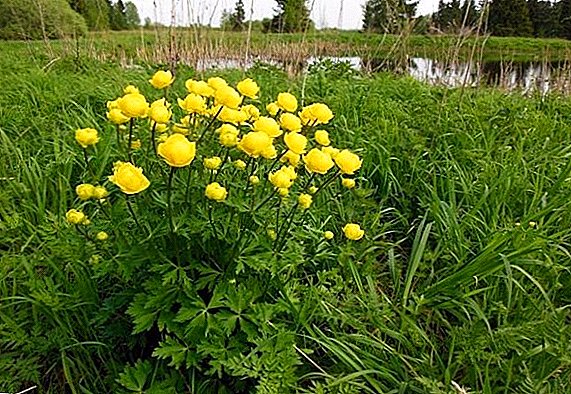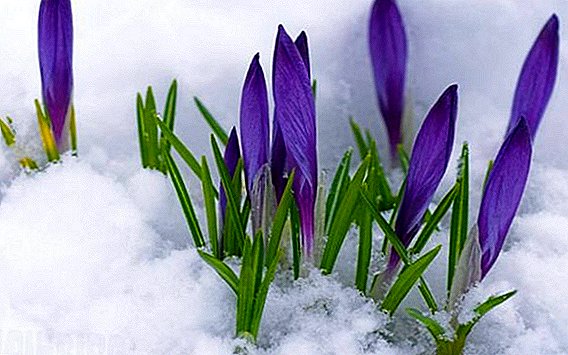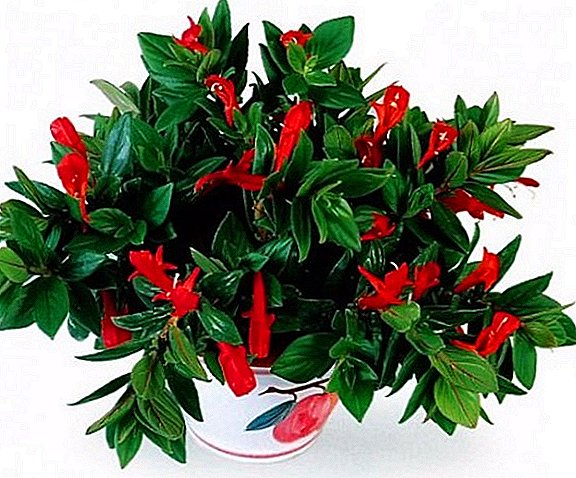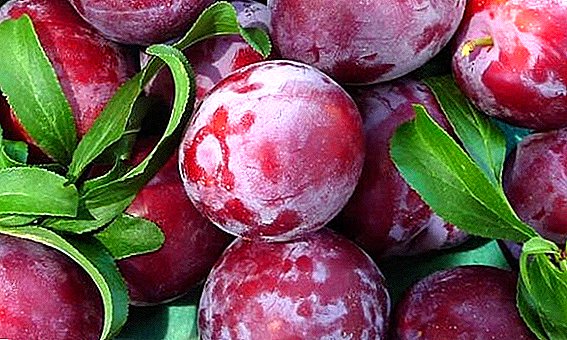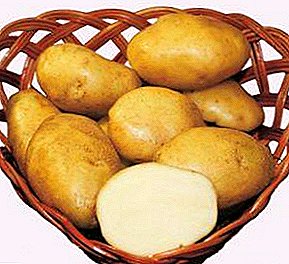
Due to the huge popularity of this tasty and healthy root crop, the potato varieties brought out by breeders is becoming more and more. They try to improve its natural qualities, and very often they succeed. On the other hand, the abundance of potato species can only confuse the as yet undecided host.
Therefore, if you are looking for a variety that has been tested by time and by many generations of gardeners, then you should definitely pay attention to Lorch. And in this article we will give you a description of this variety, introduce you to the peculiarities of its agricultural technology, tell you about the propensity for diseases and the predisposition to attack by pests.
Lorch potato: variety description
| Grade name | Lorch |
| general characteristics | medium late variety of universal purpose of average yield with excellent taste |
| Gestation period | 110-120 days |
| Starch content | 15-20% |
| Mass of commercial tubers | 90-120 g |
| The number of tubers in the bush | 9-11 |
| Yield | 250-350 c / ha |
| Consumer quality | good taste, crumbly flesh, not darkening when cooked, well suited for processing into starch |
| Recumbency | 88-92% |
| Skin color | yellow |
| Pulp color | white |
| Preferred growing regions | North-West, Central, Volga-Vyatka, Central Black Earth, North Caucasus, Middle Volga, Lower Volga, Ural and West Siberian |
| Disease resistance | susceptible to potato cancer, nematode and scab, moderately resistant to late blight |
| Features of growing | does not tolerate high temperatures and lack of moisture |
| Originator | GNU Institute of Potato Farm them. A.G. Lorch, GNU Penza NIISH |
Lorch is the oldest domestic potato variety, it was bred in 1922 at a potato breeding station, which is now known as the All-Russian Research Institute of Potato Farming. This grade was created by breeder A. G. Lorchin honor of whom he got his name. Included in the State Register since 1931. Potatoes varieties Research Institute. Lorch: Excitement, Aspia, Barin, Bronnitsky, Vasilek and other varieties.
Refers to mid-late varieties of potatoes, its growing season is 80 - 100 days. It has table purpose, and also suits for processing on starch. The content of the latter he can reach 20% and above.
In the table below you can see how many percent of starch is found in other varieties of potatoes and compare them with this:
| Grade name | Starch content |
| Lorch | 15-20% |
| Grenada | 10-17% |
| Cheri | 11-15% |
| Natasha | 11-14% |
| Zekura | 13-18% |
| Bullfinch | 15-16% |
| Timo | 13-14% |
| Spring | 11-15% |
| Molly | 13-22% |
| Giant | 16-19% |
| Santana | 13-17% |
Tubers at Lorch are large, heavy and oblong, the average mass of one commodity fruit is 115 g. The peel is thin and smooth, light beige. Pulp white and very tasty, in the process of cooking crumbly. It has no properties to darken during heat treatment.
Productivity is good, on average gardeners harvest 25 - 35 t / ha. The bumpiness is also high and keeps at around 88 - 92%.
The yield of other varieties for comparison is presented in the table below:
| Grade name | Yield |
| Lorch | 250-350 c / ha |
| The hostess | 180-380 c / ha |
| League | 210-350 c / ha |
| Pretty boy | 170-280 kg / ha |
| Svitanok Kiev | up to 460 c / ha |
| Borovichok | 200-250 centners / ha |
| Lapot | 400-500 c / ha |
| American | 250-420 c / ha |
| Colombo | 220-420 c / ha |
| Red Fantasy | 260-380 c / ha |
We bring to your attention useful information about the properties of potatoes: why solanine is dangerous and potato juice is useful, is it possible to eat it raw and what is the use of sprouts.
The keeping quality of the tubers of this variety is decent, which helps with long-term storage in the cellars. The eyes are small and rare.
 Read more about the timing, temperature and storage of potatoes, the problems that arise.
Read more about the timing, temperature and storage of potatoes, the problems that arise.And also about how to store roots in winter, in vegetable stores and in the conditions of an apartment, on a balcony, in boxes, in a refrigerator, and whether it can be done in a purified form.
A photo
See below: “Lorch” photos



Bushes in this class are high and branched. The foliage is also thick, and the leaves themselves are large and light green, with a weak dissection. The corollas of the bushes are large and Have a nice looking pink-purple hue.
Features
Due to his age, Lorch got accustomed perfectly not only in most regions of the Russian Federation, but also in all neighboring countries. And his tastes and beautiful exterior the type of fruit provided him with more than a decade of successful sales in many European markets. In addition, do not forget that it is used for industrial purposes to produce starch.
IMPORTANT! As to the choice of the area for planting, it is necessary to emphasize the following: young crops of this potato culture do not like too much heat and lack of moisture in the soil. Therefore, gardeners from the southern regions should prepare good irrigation conditions, preferably automated.
In terms of soil selection, this variety is not too whimsical, however with a lack of potassium and phosphorus in the soil the resulting fruit may have a less attractive appearance. Some gardeners also prefer to cut their planting material to increase its quantity. And if individual varieties can survive this procedure with minimal losses, then in the case of Lorch, the quality and volume of the crop will drop significantly.
Planting your germinated tubers is in holes about 8 cm deep. Unlike many other types of potatoes, Lorch tubers should be placed sprouts down. This stimulates the formation of more spreading bushes, which, accordingly, will have better lighting. Subsequently, your plants need to provide mandatory feeding, nitrogen fertilizers that can be applied at the vegetation stage are best suited here.
Read more about how to feed potatoes, which fertilizers are the best and why experts recommend the use of mineral. And also when and how to make feeding, how to do it when planting.
In general, agrotechnical methods for growing this variety are used standard - hilling, weed control, mulching, if necessary and desired, watering.
 If you are not sure whether you need hilling potatoes, the answer to this question can be found in our site’s article.
If you are not sure whether you need hilling potatoes, the answer to this question can be found in our site’s article.You will also learn what tools can be used for hilling, how the manual differs from mechanized, whether it is possible to get a good crop without weeding and hilling.
Diseases and pests

Late blight
So, it has excellent protection from: viral diseases, blight, rust, bacteriosis, Alternaria, verticilliasis, Fusarium. Only 2 diseases can find a gap in his defense: scab and cancer.
Potato cancer is very dangerous and can affect not only the potato itself, but also the soil around it. Therefore, if your plants are still sick of them, then all affected bushes should be immediately burned.
Also in this case it will be necessary to carry out the correct crop rotation. That is, include it cultivated crops that will rid your soil of cancer for up to 6 years. As regards chemical protection agents, treatment of planting tubers with a foundation base or benomyl suspension can help.
In the fight against scabs, again, respecting crop rotation and the use of healthy planting material will help. In addition, siderata significantly hinder the development of the disease. As for chemicals, Trichodermin would be extremely useful. They can pickle both the tubers and the soil itself.
In this video you can see various ways to deal with scab:
If we talk about pests, then most often gardeners have to fight against the Colorado potato beetle and its larvae, with a bear, wireworm, potato moths.
We invite you to familiarize yourself with the materials on the most effective measures:
- How to get rid of the wireworm in your garden.
- We destroy the Medvedka with the help of chemistry and folk methods.
- What will help against the potato moth: part 1 and part 2.
- In the fight against the Colorado all means are good - folk and chemical:
- Aktara.
- Regent.
- Prestige.
- Corado.
It is not for nothing that Lorch remains a popular potato variety even 80 years after its creation. The high yield, resistance to many diseases and the use in industrial purposes for a long time will make this variety in demand. And if something is in demand, it means that at least it deserves the effort spent on its cultivation.
We also offer to get acquainted with other methods of growing potatoes, for example, with Dutch technology. And also to learn all the subtleties of work with early varieties, methods of growing under straw, from seeds, in bags, in boxes and in barrels.
And in the table below you will find links to potato varieties with the most different ripening terms presented on our website:
| Mid-season | Middle late | Medium early |
| Giant | Melody | Innovator |
| Tuscany | Margarita | Pretty boy |
| Yanka | Alladin | American |
| Purple Haze | Courage | Crown |
| Openwork | Beauty | Manifesto |
| Desiree | Milady | Elizabeth |
| Santana | Lemongrass | Vega |


